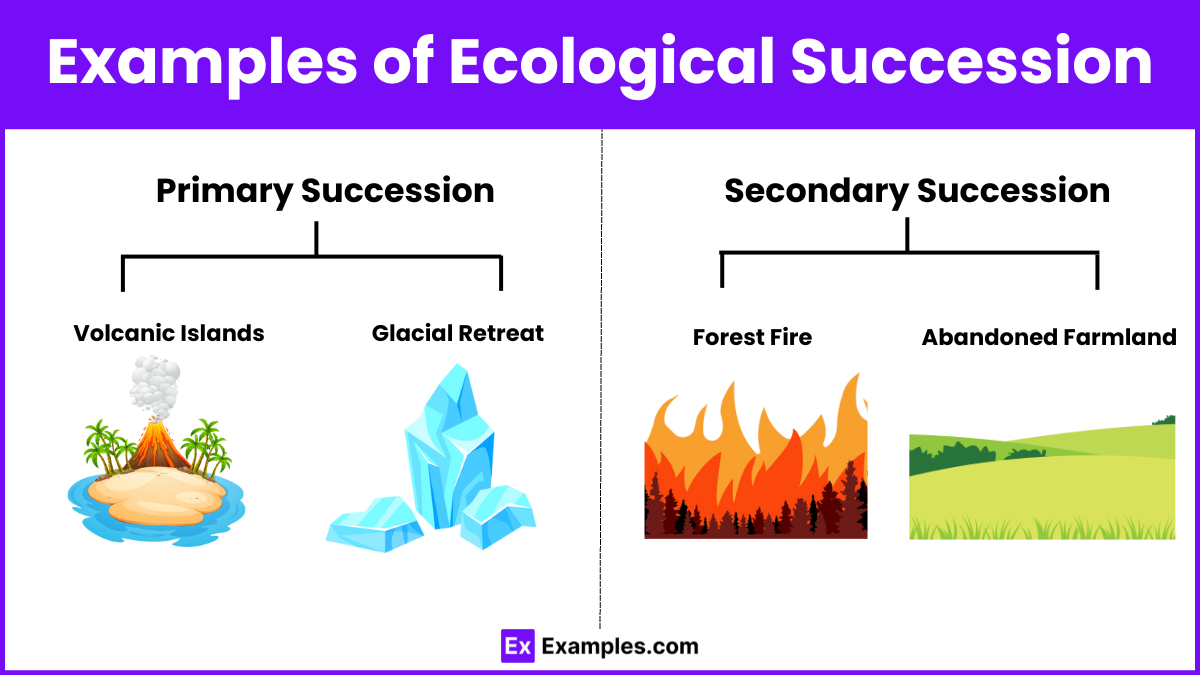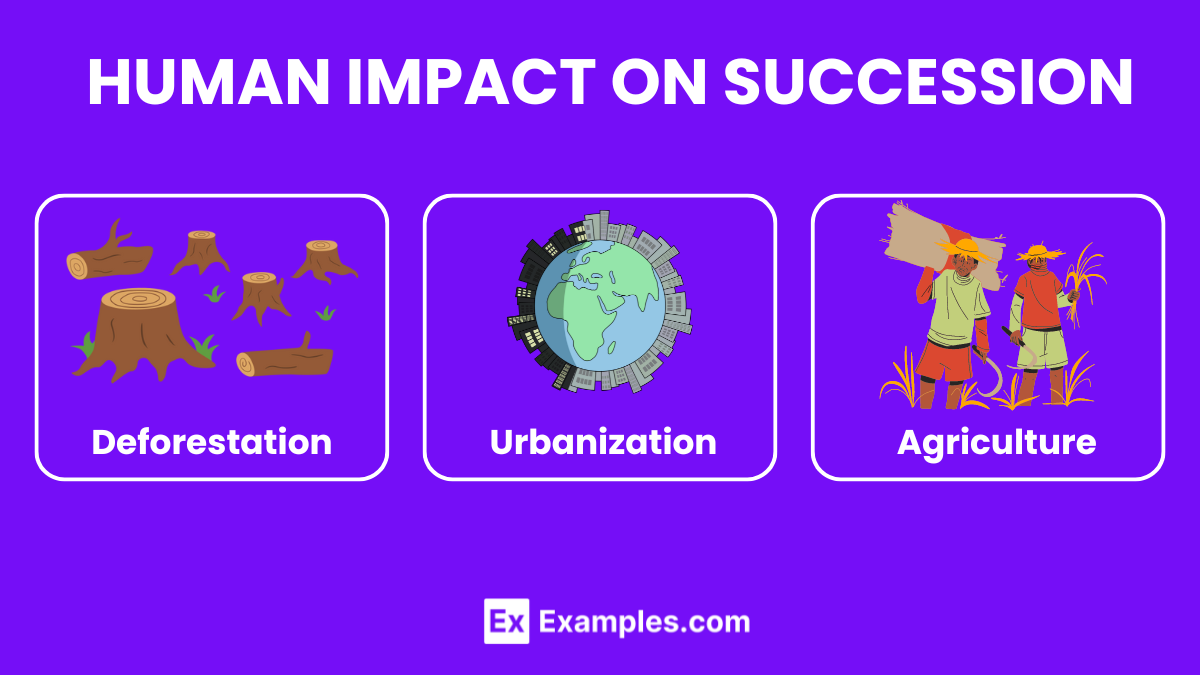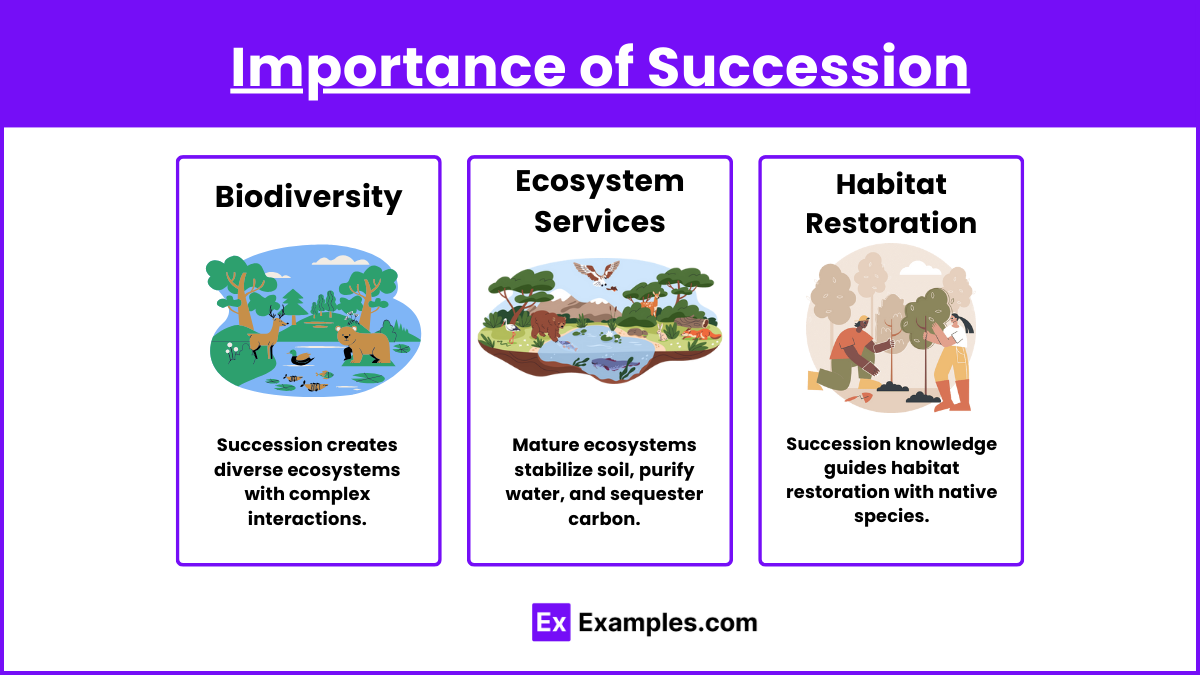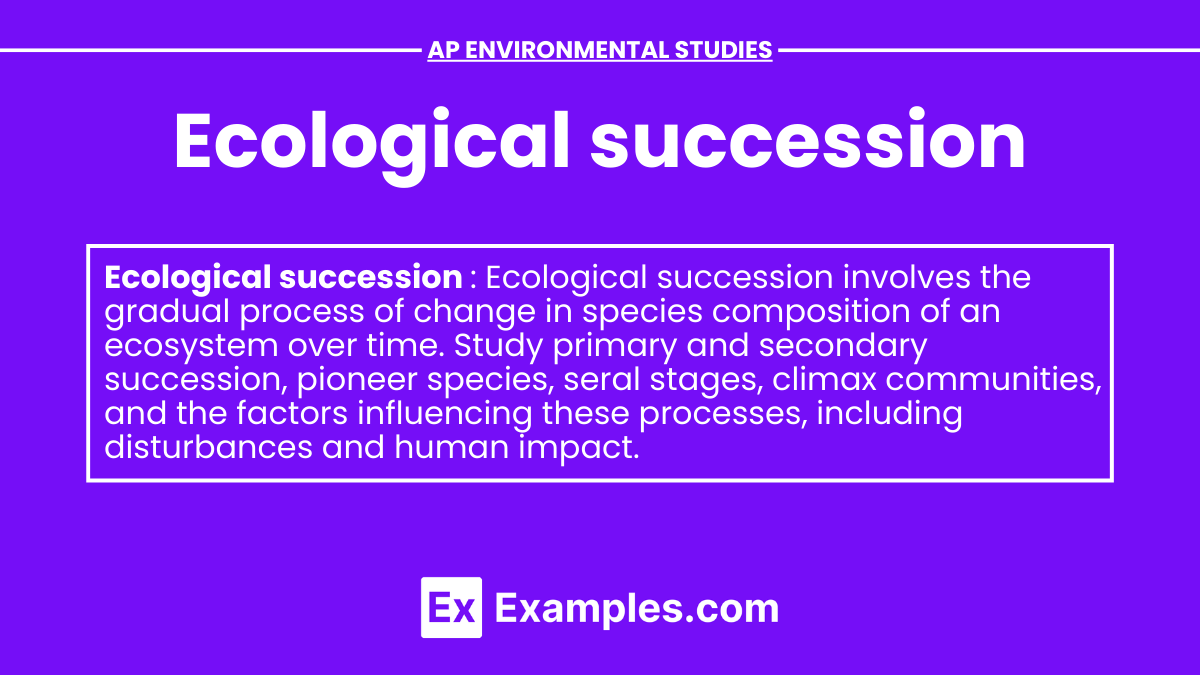Ecological succession is the gradual process through which ecosystems undergo changes in species composition and community structure over time. It typically begins with the colonization of pioneer species in a barren or disturbed habitat, which alter environmental conditions and make the habitat more suitable for other species. As these pioneer species establish, they are replaced by a succession of other species, ultimately leading to a stable community known as a climax community. Succession can be primary, starting from bare rock or soil, or secondary, following disturbance like fire or logging. Understanding succession is vital for ecology as it reveals patterns of species interaction, adaptation to environmental changes, and the restoration of ecosystems after disturbances.
Learning Objectives
The learning objectives for ecological succession encompass understanding the processes and stages involved in both primary and secondary succession, including pioneer species, seral stages, and climax communities. Students should grasp the factors influencing succession, such as soil development, climate, and disturbance regimes, and compare succession patterns in different ecosystems. Key objectives include analyzing how species interactions and adaptations drive succession dynamics, evaluating the ecological roles of different successional stages, and predicting how human activities, such as land use changes and climate change, impact succession rates and outcomes. Ultimately, students should apply this knowledge to ecosystem management, restoration practices, and biodiversity conservation efforts to promote resilience and sustainability in natural environments.
Definition
Ecological succession is the process by which the structure of a biological community evolves over time. Two types of succession, primary and secondary, describe how ecosystems develop from bare environments or after disturbances. Understanding succession is crucial for studying ecosystem dynamics, species interactions, and environmental management.
Key Concepts
- Primary Succession:
- Occurs in lifeless areas where there is no soil or initial vegetation, such as bare rock surfaces, volcanic ash, or areas left by retreating glaciers.
- Pioneer Species: The first organisms to colonize these areas, often lichens and mosses, which can withstand harsh conditions and contribute to soil formation.
- Soil Formation: Pioneer species help in the weathering of rocks and accumulation of organic matter, leading to soil development.
- Stages of Development: Gradual buildup of soil allows for the establishment of grasses, shrubs, and eventually trees, leading to a climax community.
- Secondary Succession:
- Occurs in areas where a disturbance has destroyed an existing community but left the soil intact, such as after forest fires, hurricanes, or human activities like farming.
- Initial Colonizers: Typically fast-growing plants and grasses that quickly cover the ground, followed by shrubs and trees.
- Climax Community: A stable and mature ecosystem that is the end result of succession, often resembling the pre-disturbance community.
- Climax Community:
- The final, stable community in ecological succession that remains relatively unchanged until another disturbance occurs.
- Characterized by a stable composition of species, balanced nutrient cycling, and energy flow.
- Seral Stages:
- Intermediate stages of succession, each with characteristic species and community structures.
- Includes pioneer, early, mid, and late successional stages.
- Factors Influencing Succession:
- Abiotic Factors: Climate, soil type, water availability, and disturbance regimes.
- Biotic Factors: Species interactions such as competition, predation, and symbiosis.
- Human Activities: Land use changes, pollution, and introduction of invasive species can alter successional pathways.
- Mechanisms of Succession:
- Facilitation: Early species modify the environment, making it more suitable for later species.
- Inhibition: Early species hinder the establishment and growth of other species.
- Tolerance: Later species are unaffected by earlier ones and establish based on their own ecological niches.
Examples of Ecological Succession

- Primary Succession:
- Volcanic Islands: After volcanic eruptions, bare rock surfaces are colonized by lichens and mosses, followed by grasses, shrubs, and eventually a mature forest.
- Glacial Retreat: As glaciers recede, exposed rock is gradually colonized by pioneer species, leading to the development of soil and vegetation over time.
- Secondary Succession:
- Forest Fire: A burned forest initially sees the growth of grasses and herbaceous plants, followed by shrubs, and eventually trees, leading to the re-establishment of a mature forest.
- Abandoned Farmland: When agricultural fields are abandoned, they undergo succession starting with grasses and weeds, followed by shrubs and young trees, eventually leading to a mature forest.
Human Impact on Succession

- Deforestation: Alters successional pathways by removing mature forests and creating open land, often leading to secondary succession.
- Urbanization: Creates artificial environments that can interrupt natural successional processes and create novel ecosystems.
- Agriculture: Periodic disturbances like plowing can prevent the development of climax communities, maintaining early successional stages.
Importance of Succession

- Biodiversity: Succession leads to the development of diverse ecosystems with complex species interactions.
- Ecosystem Services: Mature ecosystems provide services such as soil stabilization, water purification, and carbon sequestration.
- Habitat Restoration: Understanding succession aids in the restoration of degraded habitats by guiding the re-establishment of native species and ecosystems.


